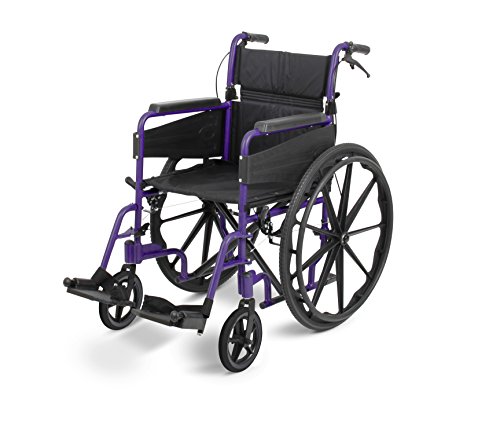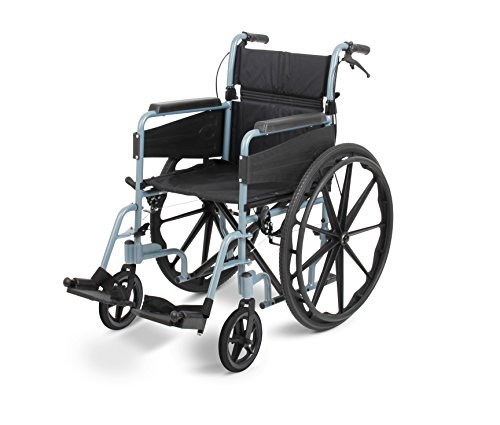관련뉴스
전문가들이 제공하는 다양한 정보
You'll Never Guess This How To Use A Self Propelled Wheelchair's Trick…
작성자 작성자 Ivy Tildesley · 작성일 작성일24-11-22 09:48 · 조회수 조회수 4
페이지 정보
본문
 How to Use a Self Propelled Wheelchair
How to Use a Self Propelled WheelchairWheelchairs offer mobility and independence to those with limitations in their walking. It is important that you know how to use your wheelchair and let an occupational therapist or doctor help you in this.
Many people move their wheelchair by using a method known as "wheelies". The user must have big hands to be able extend the rims of the wheelchair, and grip strength to propel it forward.
Seating Position
As the name implies, a self propelled wheelchair allows you to move yourself and not rely on others. For many it is the only way to recovering or maintaining their independence. It also reduces the chance of injury to the wheelchair user and others around them.
It is essential that the seat position is comfortable for the wheelchair user. To achieve this, there are a few ways to go about it. First, the footplates should be in the correct place. Release the footrest catch and then swing them around until they are at the front of the chair. Make sure that the wheelchair user's feet are comfortably placed on the footplates.
It could be necessary to lower the footrest height especially if the person is hemiplegic. If the footrests are not high enough, they could cause pressure on the spine and increase pain and discomfort.
A strap for the forehead can help the wheelchair user stay straight, particularly if their neck muscles are weak. They can be adapted to wheelchairs without headrests by a specialist in mobility.
It is crucial that if the wheelchair comes with armrests that they are placed in a good position to ensure that the wheelchair user isn't able to hit them with their arms when they move. To achieve this, it is best to choose a wheelchair with swing away or removable armrests. You can also attach foam inserts to the back of armrests to raise them up to the desired height.
A well-fitting wheelchair cushion is important, especially if a wheelchair user is at risk of skin breakdown or pressure sores. Pressure ulcers are caused when the skin rubs against surface of the wheelchair. In some instances, the skin can become dry and irritated from sitting in the same position for long periods of time. It can also cause blisters. Repositioning the wheelchair frequently can help reduce the risk of pressure ulcers.
Pushing
Self-propelled wheelchairs let users move their wheelchairs on their own without the need of someone to push them. They are much easier to maneuver due to their larger rear wheels and push handles. This allows them to move across a range of surfaces without worrying about tripping or getting stuck on obstacles like curbs or small steps.
When you are moving forward with your chair, make sure not to grip the handle too hard. Using too much pressure could cause your hands to cramp and decrease the force you can apply. You could also consider using wheelchair gloves or handrim covers that have grip materials in the palms. This will improve the positioning of your hands and increase the force you can apply.
It is important to keep the front casters clear of any debris, such as sticks and rocks. If the casters have been covered with this type of material, it may make it difficult to move in the manner you would from your wheelchair, and could cause a loss of control and/or injury. If you have a high seat-to-floor height, it could be beneficial to purchase extra padding for the front casters.
It is recommended that a caregiver pushes the wheelchair to help you climb a curb or an easy step. If you wish to attempt this on your own, additional training and practice is needed under the supervision of a health professional. It is important to position the wheelchair perpendicularly (directly) facing the curb or small steps and place the front tires just before the edge.
When you are pushing up a slope it is important to have a clear path ahead of you so that you don't cross paths with other people. If you don't have clear space ahead of you, you'll increase speed quickly and could collide with other people. You can avoid this by staying aware of the people around you while on an upslope. Also, make sure you have someone with you to catch you if you start to fall from your wheelchair.
Braking
A lightweight self folding mobility scooters-propelled chair requires the user to operate the braking and guiding actions in a particular way to ensure the chair is safe to use. This is particularly important when the chair is placed on a slope as the center of gravity can move forward if braking is not done in a controlled way.
When pushing a wheelchair, make sure that the hand is placed in the right position, usually at ten o'clock (10:00) on the wheel and releasing near two clock (2:00). This ensures that the bulk of the body weight is on the rear wheels and facilitates the smoothest, most simple push. It also helps maintain the integrity of the shoulder wrist, elbow and elbow joint.
To turn right in a wheelchair move forward on the right rim and then pull back the left hand rim. This will turn the wheelchair to the right, allowing you to stay seated. Wheelchairs are also equipped with anti-tip bars which prevent the chair from tipping forwards.
Always refer to the user guide provided with your chair to determine the maximum safe slope that your chair is able to traverse. In some situations, the wheelchair might need to be temporarily removed and hand operated to overcome steep slopes. If this is the case it is recommended that you seek the assistance of an individual or a relative and follow the steps outlined in the User Guide.
When traversing kerb stones, it is recommended to mount and dismount via ramps whenever possible. This reduces the pressure on the front and back tyres, allowing you to move faster over the kerb. The kerb climber feature on many manual wheelchairs will aid in this process by enhancing the climbing capability of the wheelchair by approximately 10cm (4").
To stop a wheelchair, move the joystick inward towards you to loosen the clutch on the motor and then release the brakes. The wheelchair will come to a stop and allow you to take off the footrests, put in walking aids and safely exit the chair.
Steering
The user is accountable for controlling and steering the wheelchair. There are a variety of ways to accomplish this dependent on the structure of the wheelchair and the additions like armrests, phone/drink holders or even a drink holder. Wheelchairs are available in a variety of sizes and shapes. The size of the front casters of a wheelchair can determine the terrain it will handle. Small casters enable wheelchairs to move more quickly, but it can be difficult on rough surfaces such as grass or cobblestone. Large casters let wheelchairs to move over rough surfaces, but they won't be nearly as fast.
On smooth surface that is level the wheelchair user should push the wheels using both hands to keep momentum. This can be done by gripping the handrims and pushing them with both hands. The hands shouldn't be wrapped around the rims of the hand, as this can cause injury and can cause over-corrections (fish-tailing) as the chair makes a turn. It is also recommended that the user of a wheelchair try leaning forward and backwards to different degrees to determine an optimal balance between leaning and control.
The person using a wheelchair must anticipate obstacles and plan ahead for more challenging terrain. It is essential that the user of the wheelchair look over both shoulders regularly to prevent running into objects or other people. Likewise, in the event that they are traveling with an adult, they should make sure that they are prepared to assist when needed. If the wheelchair is going to be used self propelled wheelchair on the slope, it should be driven or assisted by a caregiver until the user is familiar with this.
To turn, the wheelchair user pulls the rim of one hand back while pushing the other forwards. The user of a wheelchair must practice this on smooth flat ground before attempting it on a different surface as the movement may be uncomfortable and the chair may easily tip over if the action is not mastered. The power wheels of the wheelchair can help reduce the pressure on the user and also make turning easier. It is also beneficial to know that even well-meaning but untrained people often attempt to push a person in a wheelchair against their will, therefore the user of the wheelchair must ensure that their handle handles fold down or cover them with covers for the handles.

- 이전글Five Killer Quora Answers To Gas Safety Certificate UK 24.11.22
- 다음글14 Misconceptions Common To Gas Safety Certificate UK 24.11.22
댓글목록
등록된 댓글이 없습니다.


